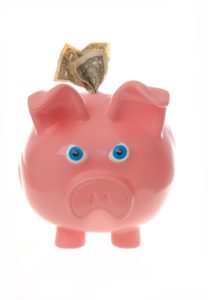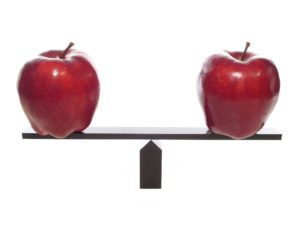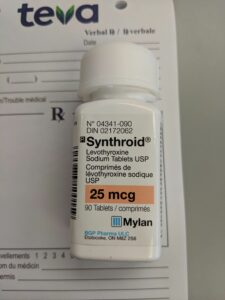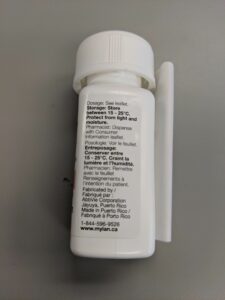by Gabriel Levitt, President, PharmacyChecker.com and Prescription Justice | Dec 9, 2016 | Drug Prices, Generic drugs
 To treat gouty arthritis, patients have been taking a drug called Colchicine for over 200 years. Apparently, it’s a very helpful drug, but it’s neither new or innovative, to say the least. It’s no longer under patent protection and is available as a generic medication. It’s supposed to be super cheap, right?
To treat gouty arthritis, patients have been taking a drug called Colchicine for over 200 years. Apparently, it’s a very helpful drug, but it’s neither new or innovative, to say the least. It’s no longer under patent protection and is available as a generic medication. It’s supposed to be super cheap, right?
So why is the estimated cash price for Colchicine .6mg at Walgreens about $590 for 100 pills?! Even with a Colchicine discount coupon it’s $239.37 – about $2.40 per pill. Compare that with the lowest cost Colchicine sold at a PharmacyChecker-verified international online pharmacy, 41 cents per pill or $41 for 100 pills – about 90% less than the Walgreens retail price! And just to be clear that’s a Canadian pharmacy price.
You can compare Colchicine prices at local U.S. pharmacies and international online pharmacies on PharmacyChecekr.com.com.
Yes, this is an example of drug companies AND U.S. pharmacies having free reign to charge whatever they want. For brand drugs on patent that often leads to exceedingly high prices because the pharmaceutical company has a monopoly: there’s no competition. But for generic drugs there is supposed to be competition to bring down the price. What went wrong with Colchicine? (more…)
Tagged with: colchicine
by Gabriel Levitt, President, PharmacyChecker.com and Prescription Justice | Dec 1, 2016 | Advocacy, Drug Prices, Government, Policy, Politics

…about the high cost of meds.
For those who want a comprehensive but straightforward explanation about why drug prices are incredibly higher in the U.S. than in other countries, I strongly recommend reading in VOX, “The true story of America’s sky-high prescription drug prices.”
Many of you know that in other countries, such as Australia and Canada, government agencies negotiate with pharmaceutical companies through myriad policy interventions to keep prescription drugs affordable for their citizens. This article explains how that’s done, why it works – but also identifies the tradeoffs where in some cases a new drug is not available outside the U.S. because regulators decide it doesn’t offer additional value over existing drugs.
It also addresses the issue of how research and development to find new drugs may be negatively affected if the U.S. institutes more control over drug prices. Some people argue that broader access to currently available drugs at lower prices means fewer new breakthrough drugs coming to market. [EDIT 12/9/2016: I wanted to make clear that many people do not agree with this position and argue that more drug company profits are spent on marketing and advertising than on research and development and the pharmaceutical industry greatly exaggerates the prospects of less innovation due to drug price controls].
In speaking with lots of people on different sides of the political spectrum and with contrasting governing philosophies — everyone agrees that us Americans are getting a bad deal on drug prices right now. This VOX piece really speaks to the issues at hand, objectively and truthfully, and if you’re interested in “getting it” you should read it.
Tagged with: price controls, VOX
by Gabriel Levitt, President, PharmacyChecker.com and Prescription Justice | Nov 24, 2016 | Advocacy, Drug Prices, Government, Politics
 It’s a national disgrace that this Thanksgiving Americans will go without medication because prices are too high. First Coast News in Jacksonville, FL, and other ABC local stations, teamed up to report on the continuing crisis of high drug prices. Its opening is chilling: “In living rooms and kitchens across the First Coast, families are choosing between food and vital medicine.”
It’s a national disgrace that this Thanksgiving Americans will go without medication because prices are too high. First Coast News in Jacksonville, FL, and other ABC local stations, teamed up to report on the continuing crisis of high drug prices. Its opening is chilling: “In living rooms and kitchens across the First Coast, families are choosing between food and vital medicine.”
The report notes that prescription drug spending is much higher in the United States than in other rich countries. Why? “Well, other countries directly negotiate drug prices on behalf of their citizens.” And that explains why Americans are buying medications from outside the U.S., despite the federal restrictions. They are cheaper overseas.
Today I’m not feeling like just slamming Big Pharma and drug companies for their greed. On the heels of this bizarre national election, it’s our elected leaders who need to feel the heat. President Elect Donald Trump states: “Allowing consumers access to imported, safe and dependable drugs from overseas will bring more options to consumers.” It’s one of the few things that Americans, Right, Left and Center, would agree on.
Happy Thanksgiving!
Tagged with: food or medicine, thanksgiving, trump
by Gabriel Levitt, President, PharmacyChecker.com and Kelly Ann Barnes, JD, RPh, Vice President, Pharmacy Verification and Information | Nov 18, 2016 | Drug Prices, Drug Safety, Narrow Therapeutic Index

[Update June 2019: Some comments on this blog post may lead readers to believe the Canadian version of Synthroid “works better” than the ones sold in the U.S. or India, and vice versa. Different people respond to medications differently, hence why it’s difficult to affirm one “works” better than the other.
On the subject at hand, we believe that the Synthroid sold in the U.S. and that sold in Canada are the same medication, based on the below pill bottles sold in Canada and our contact with Abbvie concerning Synthroid sold in the U.S.

Synthroid sold in Canada is manufactured in Puerto Rico

We contacted Abbvie about Synthroid’s origins and they responded:
Synthroid marketed in the United States is manufactured in the United States, Puerto Rico, and Ireland (Data on file, AbbVie). AbbVie sources ingredients for Synthroid marketed in the United States from the United States, Puerto Rico, France, Italy, Japan, Mexico, and Germany.
This information is subject to change. If this information is needed in the future, please contact AbbVie Global Medical Information for updated information.
Thank you for continuing the conversation.]
Synthroid is the brand name for a medication called levothyroxine, which is manufactured by drug company Abbvie in the U.S. and Mylan in Canada. It treats hypothyroidism, as well as enlarged thyroid gland and thyroid cancer. Synthroid sells for about $100 for a three-month supply in the U.S. compared to $32 in Canada. Over the course of a year, since this is a maintenance medication, the annual costs are $400 vs. $128. You compare Synthroid brand prices here. This is a very popular drug: about 23 million prescriptions are written monthly for Synthroid. For Americans who do not have insurance or their insurance doesn’t cover Synthroid, buying it from Canada means real savings. But will they be getting the exact same drug?
After all, there are generic versions of levothyroxine sold in the U.S. that cost even less than Synthroid in Canada: $10 at Walmart for a three-month supply. For most medications (but there are exceptions) your best bet is the lower cost U.S. generic compared to a higher cost brand drug internationally. In the U.S., the FDA affirms that approved generics are bioequivalent to the brands, meaning the active ingredient has the same rate and extent of absorption in the bloodstream (for all intents and purposes they are the same). But for some medications, especially those with a narrow therapeutic index, your provider may not want you to take a generic. Medications with a narrow therapeutic index have a narrow range between the drug’s risks and its benefits and small differences in dose or blood concentration may matter, meaning it’s more critical that the amount of pharmaceutical ingredient is precise and delivered correctly through the bloodstream. But what about brand products of the same medication made in different countries? (more…)
Tagged with: AbbVie, levothyroxine, mylan, Synthroid
by PharmacyChecker.com | Oct 21, 2016 | Drug Prices, PharmacyChecker Answers
 Jublia (efinaconazole topical solution 10%) was approved for use in treating toenail fungal infections in 2014. The company which distributes it in the U.S., Valeant Pharmaceuticals International, has a history of charging astronomical prices for its drugs and the situation is no different for Jublia. A 4 ml bottle (enough to treat one toe daily for a month) has a cash price of about $649, and even with easily available discounts, it costs about $550. It will likely be many years before a less expensive generic version is available in the U.S.
Jublia (efinaconazole topical solution 10%) was approved for use in treating toenail fungal infections in 2014. The company which distributes it in the U.S., Valeant Pharmaceuticals International, has a history of charging astronomical prices for its drugs and the situation is no different for Jublia. A 4 ml bottle (enough to treat one toe daily for a month) has a cash price of about $649, and even with easily available discounts, it costs about $550. It will likely be many years before a less expensive generic version is available in the U.S.
So how can you get Jublia at an even lower price? First, Valeant offers steep discounts for those first trying Jublia. As of the time of this writing (10/10/15), if you have insurance which covers Jublia, Valeant will reduce your co-pay for either the 4 ml or 8 ml bottles to just $25, or to $75 if the drug is not covered by your drug plan. If you have no insurance, the discounted price is $125 for the 4 ml bottle, or $200 for the 8 ml bottle. You can get 11 refills at this price (but just one refill if your drug plan does not cover Jublia).
Jublia is sold in other countries at much lower prices than in the U.S. In fact, in Canada, Valeant Pharmaceuticals distributes Jublia at prices far lower than those in the U.S. Many Americans get their prescription medications from outside the U.S. to save money and, although this is not technically legal, individuals are not prosecuted for importing small quantities of medication for personal use. Outside the U.S., Jublia is sold in a larger quantity – 6 ml and 12 ml bottles. Currently, you can get a 6 ml bottle for as little as $95 (plus about $10 shipping) from any of any of several PharmacyChecker.com verified international pharmacies which dispense the medication from licensed pharmacies. This international online price is the equivalent of getting 4 ml for about $67 – more than an 80% discount off the standard U.S. price.
Tagged with: jublia, Valeant
by Gabriel Levitt, President, PharmacyChecker.com and Prescription Justice | Sep 30, 2016 | Advocacy, Drug Prices, Policy, Politics

What Americans think about drug prices…
A new poll by Kaiser Family Foundation found that 44 million Americans find it difficult to afford medication. Also, 77% of Americans believe drug prices are unreasonable, up from 72% last year. On the other hand, most Americans did not have trouble affording their medications. Of the 55% of Americans who take medication, 73% say they can afford them, 26% say that its’ difficult. (I’m not sure why that doesn’t round to 100%).
Overwhelming majorities of Americans support policies, legislative reforms in most cases, to bring down prescription drug prices and have access lower cost medications from Canada. The most popular policy would be forcing pharmaceutical companies to be transparent about their pricing of medication. The next two most favored policies are allowing Medicare to negotiate drug prices and expanding personal importation of lower cost medication from Canada.
The Kaiser Poll was a nationally representative random survey of 1204 adults living in the U.S. Public and voter opinions on drug prices are just one part of the survey, albeit the main one: but the poll also covers voter opinions and data about health insurance generally, Obamacare, premiums, and deductibles.
The Kaiser Poll has very interesting political analyses relating to how a person will vote in the upcoming presidential election and the candidates’ positions on prescription drug costs and other healthcare issues. If interested, the positions of Hillary Clinton and Donald Trump are summed up on the blog of Prescription Justice. Both Clinton and Trump support expanding access to lower cost imported medications through personal importation, but Clinton has a much more ambitious plan, which is very much congruous with public opinion among Democratic and Republican voters.
Tagged with: Kaiser, poll
 To treat gouty arthritis, patients have been taking a drug called Colchicine for over 200 years. Apparently, it’s a very helpful drug, but it’s neither new or innovative, to say the least. It’s no longer under patent protection and is available as a generic medication. It’s supposed to be super cheap, right?
To treat gouty arthritis, patients have been taking a drug called Colchicine for over 200 years. Apparently, it’s a very helpful drug, but it’s neither new or innovative, to say the least. It’s no longer under patent protection and is available as a generic medication. It’s supposed to be super cheap, right?








